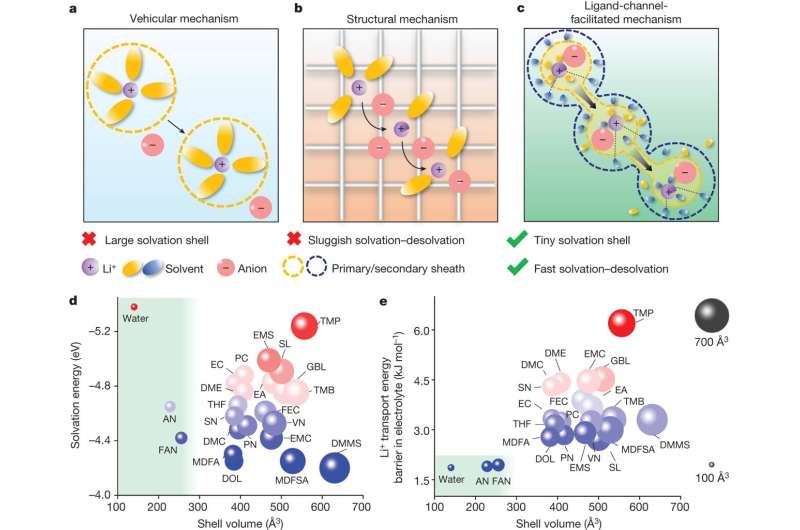March 1, 2024 report
This article has been reviewed according to Science X's editorial process and policies. Editors have highlighted the following attributes while ensuring the content's credibility:
fact-checked
peer-reviewed publication
trusted source
proofread
Electrolyte solution reduces Li-ion battery recharging time while capacity remains at low temperatures

A team of chemists and engineers affiliated with several institutions has found an electrolyte solution that can be used to reduce the recharging time of lithium-ion batteries while allowing battery capacity to remain comparatively high at low temperatures.
In their paper published in the journal Nature, the group describes the new electrolyte and how well it worked during testing. Chong Yan and Jia-Qi Huang with the Beijing Institute of Technology have published a News and Views piece in the same journal issue, outlining the work done by the team on this new effort.
As Yan and Huang note, lithium-ion batteries have proven their usefulness in a wide variety of applications, but that does not mean there is no room for improvement. One improvement that users of battery-powered devices would like to see is faster recharging. They would also like to see improvements in battery capacity as temperatures drop during the winter months. In this new study, the research team found an electrolyte solution that they claim reduces charging time while also preventing loss of capacity when exposed to cold temperatures.
In their work, the team working in China found that the use of organic solvents could greatly improve the mobility of ions in a battery electrolyte, allowing for faster charging. They noted that such solvents could also be used to prevent loss of capacity in temperatures as low as -80°C.
In their work, the team used a solvent called fluoroacetonitrile, which has molecules that are much smaller than those typically used to make the electrolyte. The molecules of the solvent tend to surround the lithium ions, forming a shell. As the shells touch, they form a sort of tunnel, allowing the ions to move more quickly through the electrolyte.
Testing showed ionic conductivity of 40.3 millisiemens per centimeter under normal ambient conditions, which, the team notes, is approximately four times that of standard batteries. They also found that putting their test batteries in a freezer did not reduce their capacity.
More information: Di Lu et al, Ligand-channel-enabled ultrafast Li-ion conduction, Nature (2024). DOI: 10.1038/s41586-024-07045-4
Chong Yan et al, Tiny sheaths of solvent boost battery performance, Nature (2024). DOI: 10.1038/d41586-024-00378-0
© 2024 Science X Network


















